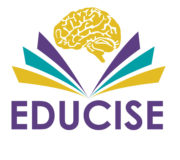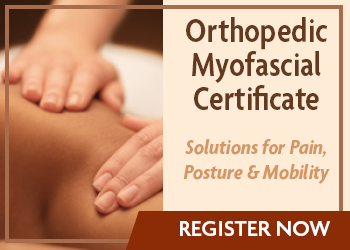Are you feeling satisfied with your work? Do you think you are making a significant difference? Remember when you were just starting out, so excited, curious and ready for the big adventure? You got through the grueling essays, the endless exams, the boards, and now you are officially a licensed therapist. Are you still excited, or have you succumbed to the challenges of the real world, managed care, limited visits, those outrageous co-pays and endless documentation. To address the ennui or downright burnout experienced by some therapists, I have asked successful therapists to volunteer to share their magic. What is their secret? I hope their words inspire you to reflect upon your practice, and to embark on a journey to make positive changes in your work and in your life. How do we make our work more meaningful, more significant? Can we really change the world for the better? Carrie Cameron shares her wisdom with us in this month’s interview.
Name : Carrie Cameron, PT, M.Div.
Profession: Physical Therapist at Meta Physical Therapy, Madison, WI
Specialty: Currently Energy Medicine, bodywork for chronic pain
Licensed in: Wisconsin
Where do you practice now? Out of my home
Tell me about your choice to be a PT
“My formal education and licensure is in the field of Physical Therapy. I was one of those fortunate youngsters who had an experience in high school that led me to know exactly what I wanted to be when I grew up! In my sophomore year I observed physical therapists at the Curative Workshop outpatient facility in Milwaukee, Wisconsin. Jenny B., RPT took me under her wing and led me through a day that shaped the rest of my life. (Watch for those days, they’ll come camouflaged as plain old days, and then one day you’ll value them as turning points on your path.)
Upon high school graduation, my choice of college was easy – at that time physical therapy schools were somewhat rare. I chose University of Wisconsin – Madison and four years later had earned a Bachelor of Science degree in Physical Medicine. After several internships, I received a certificate of Physical Therapy and sat for the Wisconsin state licensure board examinations. Although this part of my education was the basis for things to come, the physical therapy I perform today would have been hardly recognizable in those times.
I proceeded to work in several different specialties with my Physical Therapy (P.T.) degree. I worked for years in a general hospital setting, when P.T.’s performed respiratory therapy functions, burn/wound care hydrotherapy and cardiac rehabilitation, as well as basic orthopedic and neurological rehabilitation. Many of the now commonplace surgeries were new innovations then. I can still remember observing my first joint replacement operation. University of Wisconsin P.T. school was at the leading edge of neurological rehabilitation – including the groundbreaking work of the Bobaths, Rood, and Voss’s Proprioceptive Neuromuscular Facilitation, making stroke and spinal cord patient rehabilitation extremely fascinating. In my first job, I even had opportunity to join forces with the innovative surgeons at St. Joseph’s Hospital in Milwaukee that were performing their very first open heart surgeries. They believed physical rehabilitation should begin immediately post-op with deep breathing and coughing in the Intensive Care Unit, and that a patient have a solid comprehension of how to exercise independently before even leaving hospital – perhaps an old fashioned idea, but I think a good one.
My cardiac specialty led me to teaching Cardio Pulmonary Resuscitation (CPR) classes – and I discovered how much I really enjoyed teaching. When I semi-retired from P.T. to give birth to my babies, I trained and taught Lamaze Classes under the auspices of ASPO/Lamaze. In retrospect, not only was the teaching experience invaluable, but it laid the groundwork for learning/teaching conscious relaxation, deep breathing, guided visualization techniques and clinical hypnosis.
As my children grew, a desire to work on the ‘school calendar’ led me to train/work in pediatric physical therapy. I loved working with kids, but had to learn patience and frequently relied on my instincts with the non-verbal children. I realized that learning to follow these instincts was extremely helpful when I began training in and using myofascial release techniques, especially when unwinding procedures allowed somato-emotional releasing. (refer to www.multidimensionalhealing.com)
Using myofascial release and craniosacral therapy became the focus of my further training and I expanded to using it not only in pediatric populations, but also with general outpatient orthopedic/chronic pain patients. In the 1990’s, this work began to include horses, and over several years Doris Kay Halstead and I developed a program called Symmetry in Motion. Traveling around the United States visiting horse farms to posturally re-align horses and their riders, we honed our skills not only in deep tissue bodywork and craniosacral therapy, but also in working with the energy body to facilitate healing of the physical body. As I observed the results of this work, it began to shift my entire belief system about pain and healing. I began to think about physical therapy much more wholistically, understanding that we must address and make changes in the entire body and at all levels for true healing to occur.
So I have come to this point – certainly not an end point – but the point at which I feel like I’ve put enough of the pieces together so that I can share the specialty of Physical Therapy as I practice it today. It’s no longer physical therapy, it’s beyond physical and it’s beyond physical therapy…. It’s MetaPhysical Therapy.”
Taken from Earth Missions Accomplished: What’s Next (yet to be published!)
Do you remember the most difficult patient case you encountered?
Many – these are the ones I thrive on!
Who do you admire? The patient’s who have trusted in the process and in my skills. Every teacher I have ever had (yes, even Dorko!)
Who was your mentor? John Barnes probably ‘kicked my pebble and started the avalanche’ J
Do you mentor? I haven’t since I worked at Alternative Therapy Center of Madison (patient load too inconsistent since I ‘semi-retired’).
What makes you most satisfied with your work? Increasing the conscious awareness of the energy body in those that are interested.
If you could change something about your work, your profession, what would it be?
I have worked for years to increase the awareness of Integrated Physical Therapy, including writing MultiDimensional Healing. I have recently had it reformatted into a digital book – perhaps that will help get it into the P.T. schools
Tell me your opinion regarding evidence-based research and practice
For the most part pretty ineffective for alternative medicines – most researchers like to isolate specific modalities, and most often it is the right combination of modalities that helps individual clients.
Tell me about your view on continuing education?
I really wish more of the coursework I’m interested in was accepted by state licensing boards…
What do you recommend for new grads? for those in the field over 10 yrs?
Follow your heart. Develop your instincts.
What does the future hold for you?
More of the same? J
Tell me what is most important in contributing to your success/ happiness/ position in the field?
It is my soul path, and I was fortunate enough to find it early in life and have the sense to follow it!
Thank you, Carrie, for sharing your wisdom and experience. I love your recommendation to “follow your soul path”, instead of just following a protocol, someone’s clinical prediction rule, or the requirements of some insurance company interested in their own profits. We are in a healing field based on art and science. We need to remember to use all of the creative skills of an artist while integrating the evidence of science to produce outstanding results that make a difference in people’s lives. To learn more about Carrie’s work, visit www.multidimensionalhealing.com.
Interview with: Theresa A. Schmidt, DPT, MS, OCS, LMT, CEAS, DD
If you would like to participate in a future interview, let us know: contact: www.educise.com.

